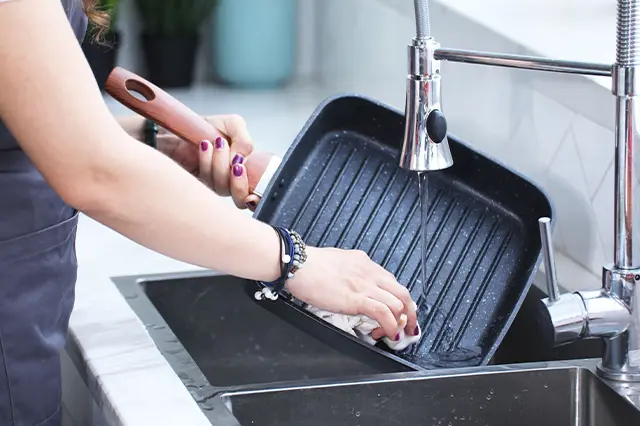
How To Repair A Kitchen Faucet In 5 Simple Steps
Kitchen fixtures are a crucial part of any kitchen design and they don’t last forever. A leaky or malfunctioning faucet can be an annoyance and make your kitchen look less appealing. Fortunately, fixing it doesn’t need to be so hard. In this post, we will discuss how to repair a kitchen faucet in 5 simple steps – no prior experience required! From finding the right tools for the job to the steps for replacing parts, we’ll cover everything you need to know about fixing a kitchen faucet. So, let’s get started!
Step 1: Remove the old kitchen faucet
If your kitchen faucet is old and needs to be repaired, the first step is to remove the old one. This can be done by turning off the water at the shut-off valves under the sink, unscrewing the supply lines from the faucet, and then removing the mounting nuts that hold the faucet in place. Once you have removed the old faucet, you will be able to install a new one in its place.
Step 2: Install the new kitchen faucet
Assuming you have already gathered the necessary tools, it is now time to install the new kitchen faucet. The first step is to shut off the water supply to your sink. There should be a knob or lever under the sink that does this. Once the water is off, open up the faucet to release any residual water pressure in the lines.
Next, remove the old faucet. There will be nuts holding it in place – use your wrench to loosen them and remove the faucet. With the old faucet out of the way, you can now install the new one. Put it in place and hand-tighten the nuts to hold it in place.
Now it’s time to reconnect the water supply lines. Attach them to the appropriate locations on your new faucet (they are usually color-coded for easy reference). Once everything is connected, turn on the water at the main shut-off valve and check for leaks. If there are none, you’re all done!
Step 3: Test the new kitchen faucet
Once you have the new faucet in place, it’s time to test it out. Make sure to turn off the water supply before you start testing. Turn on the faucet and let the water run for a few minutes. Check for any leaks or drips. If everything looks good, then you’re done!
Step 4: Clean up
If you’re like most people, your kitchen faucet sees a lot of use. Over time, this can lead to wear and tear that can make it difficult to operate. Luckily, repairing a kitchen faucet is a fairly simple process that anyone can do with just a few tools and some basic knowledge.
To start, you’ll need to turn off the water to your sink. This is usually done by turning the valves under the sink clockwise until they’re tight. Once the water is off, open up the faucet to release any remaining pressure and then disconnect the supply lines.
Next, take a look at the aerator. This is the screen at the end of the faucet where the water comes out. If it’s clogged or dirty, give it a good cleaning with vinegar and water or replacement if necessary.
Now it’s time to take a look at the O-rings. These are small rubber rings that seal connections between different parts of the faucet. Over time, they can dry out or become damaged, which can cause leaks. To check them, simply remove them from their seats and inspect for wear or damage. If they look good, put them back in place and move on to the next step.
Finally, reassemble everything in reverse order and turn on the water supply. Test your faucet by running some water through it to make sure there are no more leaks. With these simple steps, you can have your kitchen faucet running like new again in no time!
Step 5: When to call a Plumber
If your kitchen faucet is leaking or if the water pressure is reduced, it may be time to call a plumber. Plumbers can help identify the source of the problem and make the necessary repairs. In some cases, the damage may be too severe for a do-it-yourselfer and you will need to hire a professional.
Conclusion
Repairing a kitchen faucet is a relatively easy task that anyone can do with the right tools and knowledge. Following these five simple steps will help you repair your kitchen faucet quickly and properly, saving you both time and money in the long run. Be sure to use caution when working around natural gas or water lines, as accidents can happen if proper safety precautions are not taken. If at any point during the process you find yourself feeling overwhelmed or unsure about how to proceed, call an experienced professional for assistance.
